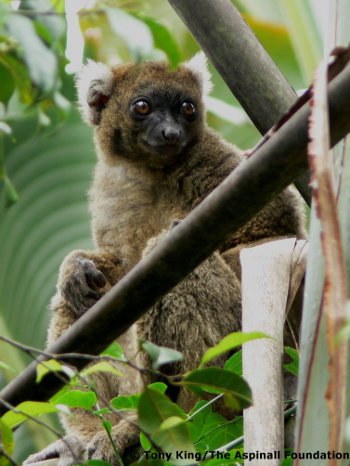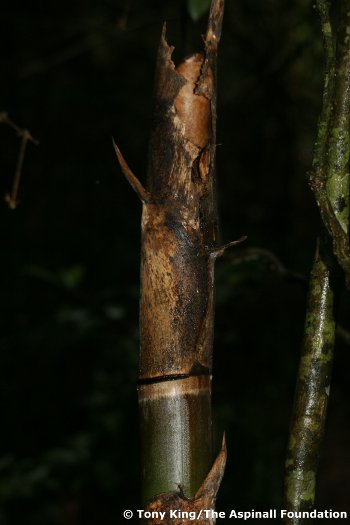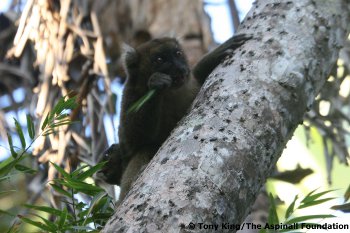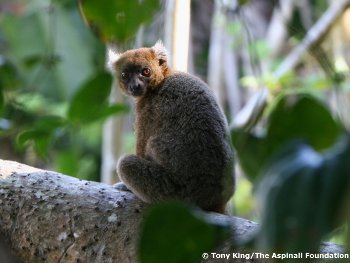
Mainly eating bamboo, with the occasional fruit snack, might lead you to think this lemur is very small, but in fact it weighs in at around 2.5 kilograms!
This ‘rotund’ lemur was discovered in 1870. It was then not seen for over 100 years and scientists thought it had gone extinct. Fortunately it was rediscovered by two French ecologists in 1972.


Bamboo lemurs belong to a primate group which also includes bushbabies and lorises, but unlike these animals it is completely dependent on bamboo.
The plant is a very low-energy food source, so the lemur must graze all the time and rest a lot. It’s easy to see sites where bamboo lemurs have been eating: usually an area full of stripped bamboo stems. They use their strong jaws to rip off the outer layers so they can reach the more digestible inner parts. During different seasons they can switch to bamboo leaves, which are lethal to other species due to their high concentration of poisonous compounds.

As with many specialist species, the greater bamboo lemur cannot adapt to its rapidly changing habitat. It is threatened by slash-and-burn agriculture, and by the extensive cutting of bamboo, even in protected areas. In some regions they are still hunted with slingshots.
Now they are only known to live in the south-central part of the eastern rainforest in Madagascar. The population is currently estimated at less than 250 individuals and the species is classified as Critically Endangered by the IUCN, and ranked as number 41 in the EDGE mammals list. Support our efforts to save the bamboo lemur and other EDGE species by joining us as a fundraising Champion, or donate here!
